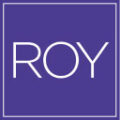How to cope with inflation and rising interest rates?
A hot topic these days, galloping inflation and rising interest rates can be a major source of concern. In particular for anyone who has to go to the grocery store on a daily basis or fill up on gas. Few of the things around us seem to be immune to this surge. This phenomenon is affecting our purchasing power and making our savings account melt like snow in the sun.
This article is a brief summary of the elements involved in rising interest and inflation rates. It also contains a list of a few simple tips to help deal with them.
Inflation
When inflation is low, the economy is doing well and, consequently, so are your finances. The Bank of Canada considers interest rates low when the annual interest rate hover around 2%. However, prices tend to rise when the demand for goods and services is greater than what is available in the economy. There are several reasons why this is currently the case, but three in particular:
- The impact of the COVID-19 pandemic on supply chains;
- The war in Ukraine;
- Labour shortages in Canada and other G7 countries.
As prices and consumer price index (CPI) escalate, the equivalent value of our money diminishes. This loss of purchasing power affects our standard of living, and reduces the value of our employment income and gathered savings. High inflation also means that consumers and businesses can’t anticipate their costs from one day to the next.
The current situation makes life particularly difficult for those whose incomes don’t keep pace with rising prices. This is especially the case for those on pensions or low wages.
Rising interest rates
When we hear interest rates rising, we immediately think of our mortgage (if we have one). By restricting access to credit (by raising rates), the Bank of Canada is affecting the most indebted households. Allow us to demonstrate how this happens.
People who have just signed up for a fixed-rate loan can rest easy. However, those who have opted for a variable rate will see their monthly payments rise. For a mortgage amortized over 25 years, each increase of 25 basis points costs about $12 a month per $100,000 borrowed.
Let’s say the key interest rate rises by 125 basis points over the next year as forecast. In this scenario, a $300,000 mortgage will cost an extra $2,160.00 per year, which is no small feat.
Changes in the key interest rate also affect the cost of mortgage lines. Unless you have good savings, you’ll have to cut back somewhere to absorb these additional expenses. The most frequent reductions occur in items classified as non-essential (see below).
The two phenomena (inflation and interest rates) intertwine. As the economy grows and inflation remains strong, the Bank of Canada will likely raise the policy rate. The latter is the rate at which the Bank of Canada lends to banks. The Bank of Canada does it in order to curb rising prices and reduce the economy’s overheating.
How to cope with inflation?
First solution to inflation: Research the best prices for groceries and other consumer goods.
Shopping for groceries after comparing prices is a good habit to adopt. On the other hand, you should avoid impulse buying on the spur or hunger of the moment. Some products are more sensitive to price rises, like meat, for example. You can replace them with legumes from time to time.
A number of free online sites make it easy to compare prices from one grocer to another. The same goes for consumer goods: it’s now very easy to compare prices online, from the comfort of your own home.
Second solution to inflation: Cut back on gasoline
If you live in an area where public transport is available, opt for this mode of transportation. You can choose to use it on a full-time or part-time basis. Opt for working from home if possible. If your car is coming to the end of its lease, opt for a more fuel-efficient or electric vehicle.
Third solution to inflation: Cut non-essential expenses
You can monitor and track your expenses in order to save money. You can easily cut optional expenses, also known as non-essentials, without significantly impacting our lifestyle. Outings, hobbies or Friday night dining, are examples of optional expenses.
Fourth solution to inflation: Review our monthly subscriptions and other recurring expenses
Review your digital subscriptions and streaming services such as Netflix, cable and cell phone packages, insurance products, and more. See what eats into your budget on a recurring basis and eliminate anything that’s superfluous or that you don’t use.
You can also sell what you no longer use, and give a second life to objects you no longer need. Our closets frequently house a plethora of items or garments that have fallen into disuse. Some of them can retain a certain monetary value on the second-hand market.
Fifth solution to inflation: Budgeting and debt reduction
We cannot outpace inflation which is why we should base our personal financial decisions on our budget. It is important to start with this exercise.
Another must do is reduce your consumer debt. If you have balances on high-interest credit cards, it’s important to tackle them quickly.
If you have any questions about the above, please don’t hesitate to contact us. You can contact our team at 1-877-352-6661 or by completing our contact form available here. We’ll be happy to discuss your tax debts or your indebtedness in general. We remind you that the first consultation, whether online or in person, is always free and confidential.



